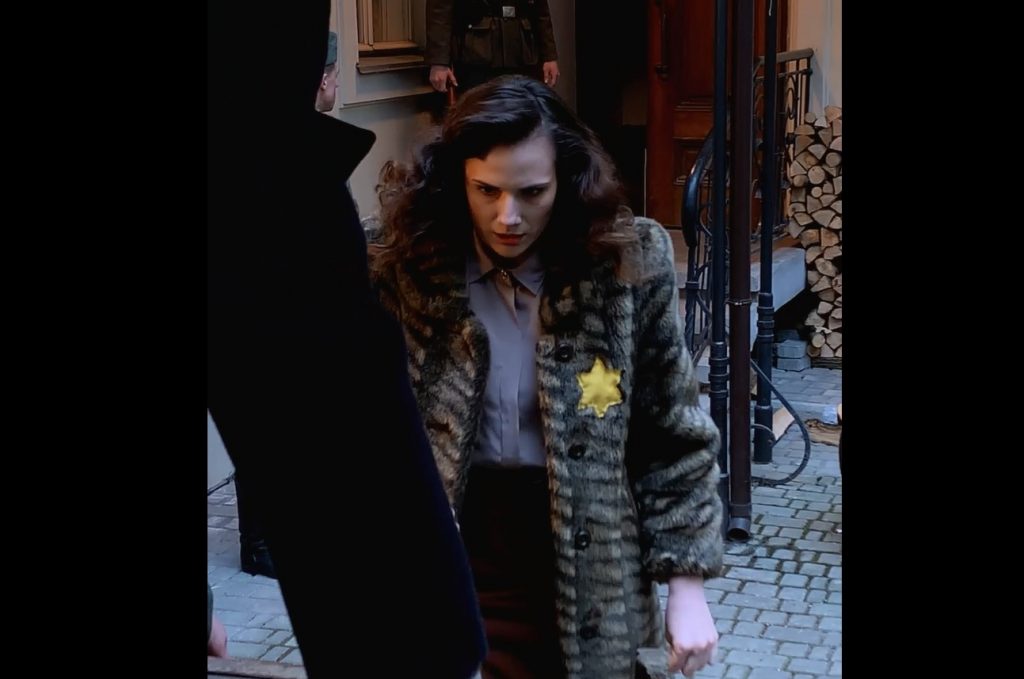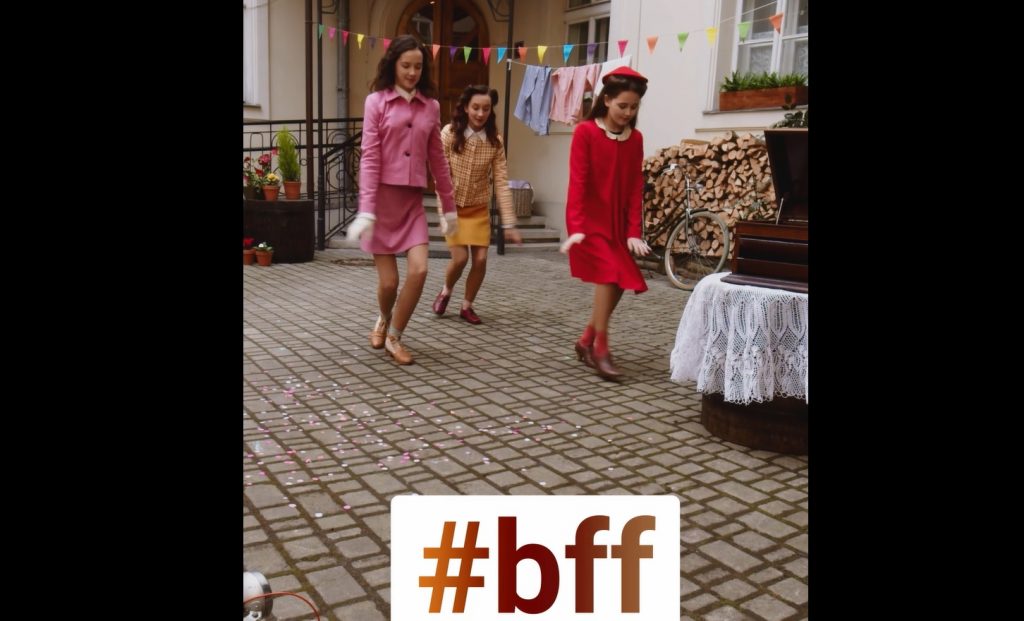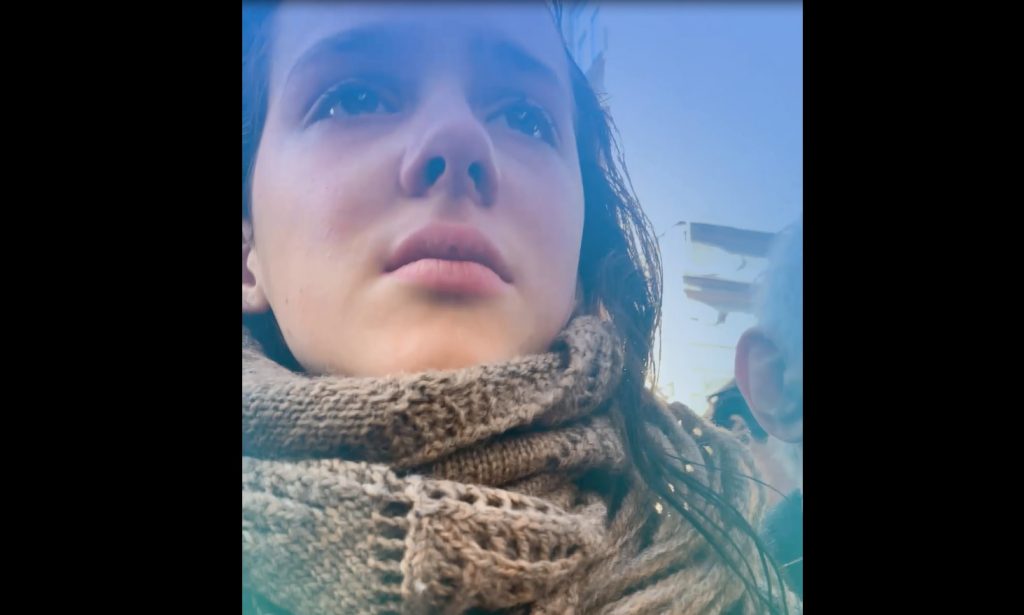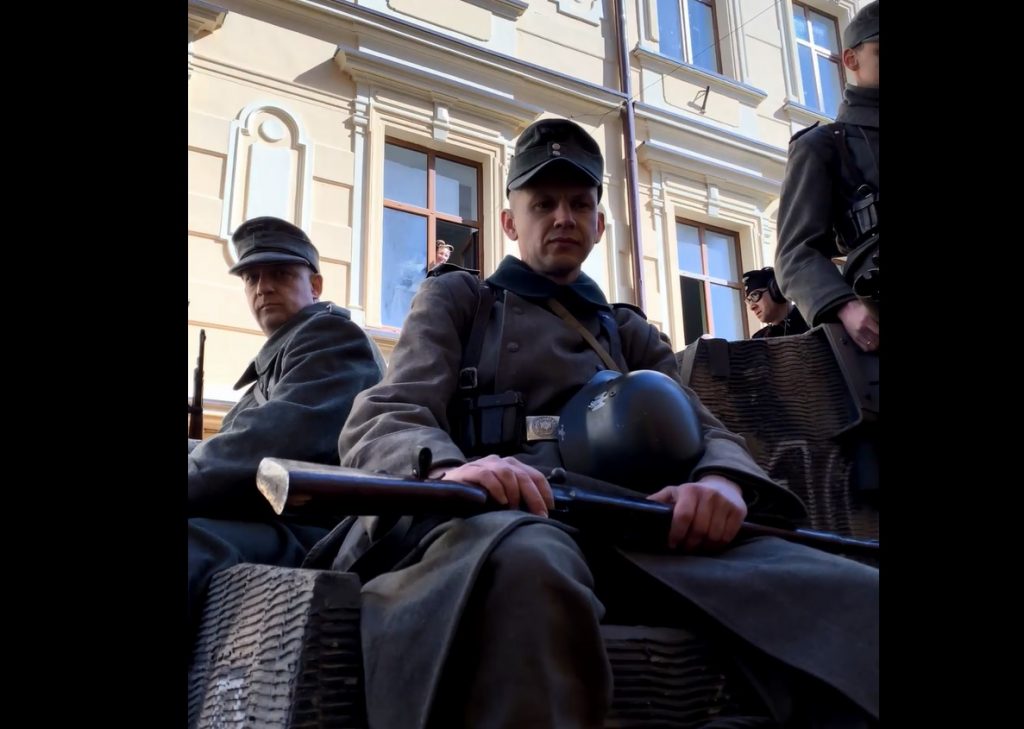Eva Heyman’s Instagram page is unlike any other. As a jovial 13-year-old, she posts videos of herself laughing with friends, getting ice cream with a love interest, dancing, and blowing out birthday candles. In a series of clips, she speaks animatedly about living with her grandparents and becoming a famous news photographer in London one day.
But Eva’s stories take place in Hungary in 1944, when the invasion from Nazi Germany struck late in World War II, beginning in March that year. The deportation of the country’s 424,000 Jews started just a few months later.
The videos are part of a trailer that premiered across the world this week, chronicling Eva’s life in snippets – much like her peers do today.
“Eva Stories,” are part of a Holocaust education project for the age of social media, based on the diary of the real Eva Heyman, then 13, who lived in the city of Nagyvarad.
SEE ALSO: VR Tech Is Playing A Key Role In Holocaust Education And Awareness
Eva is played by a British actress in the videos which quickly take a dark and horrific turn, showing a passing elderly man calling her a “dirty Jew” one day, Nazi soldiers staring at her while they sit on tanks and march in the street as they invade her city, moments of terror and intimidation as she and her family are forced to wear the yellow stars, and finally deportation.
Heyman and most of her family were killed at the Auschwitz death camp in Nazi-occupied Poland.
A series of some 70 Instagram stories documenting moments of her short life will be posted to the page beginning on Wednesday afternoon, when Israel marks Holocaust Remembrance Day to commemorate the six million Jews murdered during World War II across Europe. On Thursday morning, a one-minute siren will wail across the country to mark their memory.
The project was initiated by Mati Kochavi, an Israeli tech executive and the founder of a number of tech companies (including AGT International, a leading global IoT and data analytics company, 3iMIND, a software company that sells “web intelligence,” and Vocativ, a digital media company that produces often-viral content). Kochavi conceived of the idea, and financed it to the tune of several million dollars, alongside his daughter Maya.
The Kochavis picked Eva’s journal among some 30 diaries written by teenagers during World War II because it evoked “something very modern and relatable,” Kochavi told the New York Times.
Sign up for our free weekly newsletter
Subscribe“The memory of the Holocaust outside of Israel is disappearing,” Kochavi said in the interview. “We thought, let’s do something really disruptive. We found the journal and said, ‘Let’s assume that instead of pen and paper Eva had a smartphone and documented what was happening to her.’ So we brought a smartphone to 1944.”

A screenshot from Eva Stories showing an actress portraying Eva’s mother forced into a truck as part of the deportation of Jews in Hungary.
Indeed, denial and ignorance of the Holocaust are shockingly rampant, and anti-Semitism levels are alarmingly high.
According to a 2018 report, a third of American millennials (born between early 1980s and early 2000s) did not know what Auschwitz was and 22 percent had not heard of the Holocaust or were not sure if they had. One in three Europeans knew “just a little” or nothing at all about the Holocaust in a survey taken in seven European countries. In the UK, 45 percent of people polled in a separate report said they did not know how many people were killed in the Holocaust. One in five believed fewer than two million Jews were murdered.
A report released on Wednesday by the Kantor Center, headed by European Jewish Congress President Moshe Kantor, said there was a 13 percent rise in anti-Semitic incidents in 2018, citing an “increasing sense of emergency” in parts of North America and Europe where Jews once felt safe. The report came four days after a self-proclaimed white nationalist killed a 60-year-old woman and wounded three others when he opened fire in a synagogue in San Diego, and six months after 11 people were gunned down in a similar attack in Pittsburgh.
Kochavi said in a statement that the dwindling number of Holocaust survivors in the world (just 200,000 remaining in Israel) was one of the factors that spurred him to action.
“Just 2.7 percent of the discourse surrounding the Holocaust in Europe and the US comes from young people – a marked decline compared to previous generations,” he said.
“In the digital era, where the attention span is low and the emotional barrier is rising, and amid the dwindling number of survivors, there is a great need to find new models of testimony and memory. Instagram is a storytelling platform and like any media and content platform, it is possible to tell a story that is both deep and superficial at the same time. The idea of the project is to use the social networks to spark a new genre of memory, and we hope that through this story, we hope to give viewers a closer look at Eva’s life and her psyche,” Kochavi explained.
“The stories transform Eva … into a dynamic, concrete figure who tells her life story and the events around her, in the same way millions of young people across the world document their daily lives,” he added. “We fell in love with Eva, we did the research and studied her journal and her life for some time and throughout we asked ourselves how she would tell her story had she had the camera she so longed for.”
Eva Stories was filmed in Ukraine over some three weeks with a 400-strong production team that sourced actors, trucks, tanks, motorcycles, and clothing.
Over the course of some 24 hours, videos, images, and passages from Eva’s journal, which she started on her 13th birthday on February 13, 1944, will be posted to the Instagram page.
Her last entry was on May 30, 1944, a few days before her deportation. She was killed in Auschwitz on October 17, 1944.
Eva’s mother, Agnes Zsolt, survived the Holocaust and found the diary when she returned to Nagyvarad, according to the New York Times. She later ended her own life.
Related posts

Rehabilitation Nation: Israeli Innovation On Road To Healing

Israeli High-Tech Sector 'Still Good' Despite Year Of War









Facebook comments